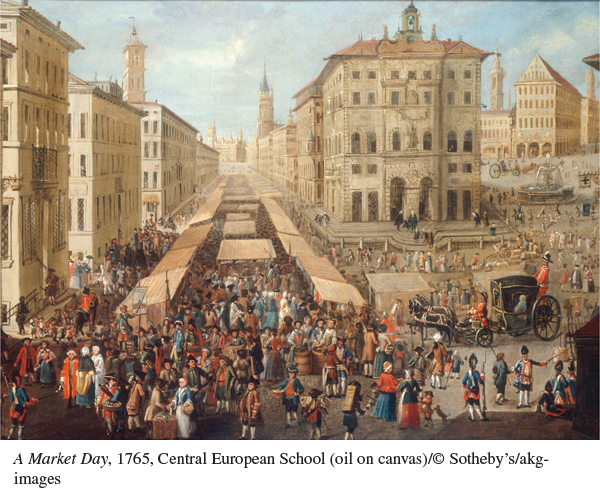A History of Western Society: Printed Page 574
A History of Western Society, Value Edition: Printed Page 553
A History of Western Society, Concise Edition: Printed Page 575
Introduction for Chapter 18
18
Life in the Era of Expansion
1650–1800
The discussion of agriculture and industry in the last chapter showed the common people at work, straining to make ends meet within the larger context of population growth, gradual economic expansion, and ferocious competition at home and overseas. This chapter shows us how that world of work was embedded in a rich complex of family organization, community practices, everyday experiences, and collective attitudes. As with the economy, traditional habits and practices of daily life changed considerably over the eighteenth century. Change was particularly dramatic in the growing cities of northwestern Europe, where traditional social controls were undermined by the anonymity and increased social interaction of the urban setting.
Historians have studied many aspects of popular life, including marriage patterns and family size, childhood and education, nutrition, health care, and religious worship. Uncovering the life of the common people is a formidable challenge because they left few written records and regional variations abounded. Yet imaginative research has resulted in major findings and much greater knowledge. It is now possible to follow the common people into their homes, workshops, churches, and taverns and to ask, “What were the everyday experiences and attitudes of ordinary people, and how did they change over the eighteenth century?”

CHAPTER PREVIEW
What changes occurred in marriage and the family in the course of the eighteenth century?
What was life like for children, and how did attitudes toward childhood evolve?
How did increasing literacy and new patterns of consumption affect people’s lives?
What were the patterns of popular religion, and how did they interact with the worldview of the educated public and their Enlightenment ideals?
How did the practice of medicine evolve in the eighteenth century?
Chronology
| 1684 | Jean- |
| 1717 | Elementary school attendance mandatory in Prussia |
| 1750–1790 | John Wesley preaches revival in England |
| 1750–1850 | Illegitimacy explosion |
| 1757 | Madame du Coudray publishes Manual on the Art of Childbirth |
| 1762 | Jean- |
| 1763 | Louis XV orders Jesuits out of France |
| 1774 | Elementary school attendance mandatory in Austria |
| 1776 | Thomas Paine publishes Common Sense |
| 1796 | Edward Jenner performs first smallpox vaccination |